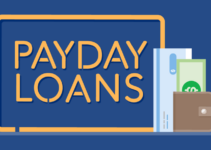The first step towards homeownership is getting pre-approved for a mortgage loan. This involves applying to a mortgage lender such as a bank or credit union that will review your credit, income, assets, and debts to figure out the loan amount you qualify for.
According to the experts at Mortgage Maestro based out of Colorado, mortgage lenders provide a pre-approval letter that states how much they will loan based on your financial profile. It shows home sellers you are a serious buyer who has the financing to buy their home. The pre-approval process also gives you a budget range for your home search.
Page Contents
Down Payment and Mortgages

Source: time.com
Most people cannot afford to pay cash for a home outright, even lower-priced starter homes. That is why mortgages exist – to finance real estate purchases over 15 or 30 years through regular installment payments.
A standard 20% down payment gives more favorable mortgage rates but lower down payments like 3-5% are available through FHA and VA loans. The more money you put down, the lower your monthly payments and interest costs over the life of the loan. Work within your budget but put down as much as possible.
First-Time Homebuyer Programs
There are special programs for purchasing a home for the first time that make it easier to qualify for financing and subsidize down payments and closing costs:
- FHA Loans – Require just 3.5% down and have looser credit standards than conventional mortgages. Ideal for first-time buyers with limited savings.
- VA Loans – Provide 100% financing with no down payment requirement for military members and veterans. No monthly mortgage insurance required.
- USDA Loans – Offer 100% financing and cheaper monthly insurance for properties located in designated rural areas. Applicants must meet income eligibility rules.
- Down Payment Assistance – State and local programs provide grants and no-interest loans to subsidize buyer down payments and closing costs. Offered as deferred loans or cash assistance that does not have to be repaid.
Using Retirement Savings for a Home

Source: aei.org
You can tap into certain retirement accounts to help buy a home without tax penalties, which helps greatly with accumulating a down payment.
- 401(k) Loans – You can borrow up to $50,000 or 50% of your vested balance from an employer-sponsored 401(k), whichever is less. The loan must be paid back with interest over 5 years maximum.
- IRA Withdrawals– Up to $10,000 in lifetime earnings can be withdrawn from a Roth IRA to purchase a first home. With a traditional IRA, up to $10,000 can be withdrawn without the early withdrawal penalty – income tax still applies.
Understanding Closing Costs
Closing costs include lender origination fees, title searches, document filing fees, home inspections, tax pro-rations, and other miscellaneous costs incurred when buying a home. They typically range from 2 to 5% of the total home sales price.
Closing costs can either be paid upfront in cash or rolled into your mortgage loan balance. Paying them in cash will save on interest over the loan term.
Getting Creative with a Down Payment

Source: thebudgetmom.com
Coming up with a down payment is the biggest barrier most first-timers face. If you don’t have enough savings, get creative leveraging other assets:
- Sell stocks – Cash out your equity portfolio if the market is favorable.
- Gift from family – Ask relatives to contribute to your down payment as a gift. Lenders allow this with proper documentation.
- Save consistently – Automate monthly or bi-weekly savings over a few years to accumulate cash for a down payment.
Conclusion
Homeownership is an accessible goal if you understand mortgage options and down payment sources. Do your research on the various options as the long-term benefits of homeownership make the effort worthwhile.




